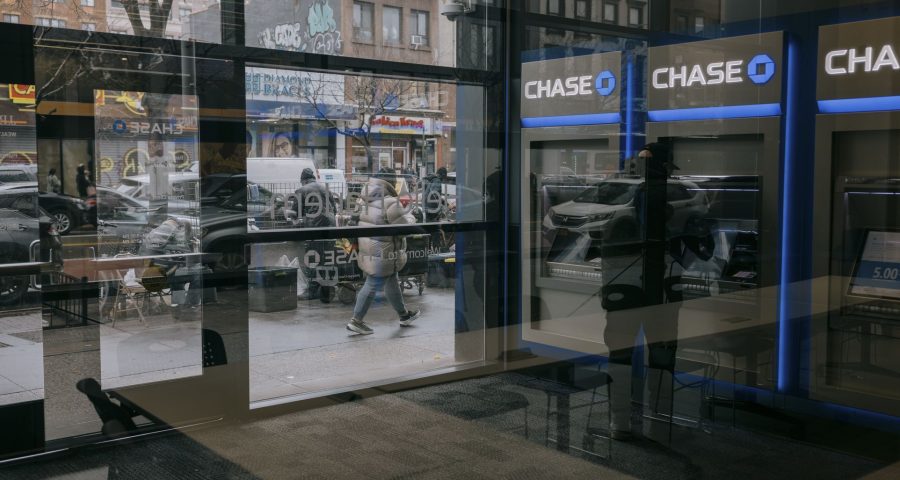The United States has long been home to a dense network of physical bank branches, dotting small towns and major cities alike. These locations have historically served as the face of financial institutions, offering a range of services from account opening to loan applications and wealth management consultations. However, the digital revolution and shifting consumer behavior have begun to reshape the traditional banking model in profound ways.
As smartphones become ubiquitous and online banking platforms grow more sophisticated, the role of physical branches is evolving. Consumers increasingly favor digital channels for speed, convenience, and 24/7 access, leading many to question whether brick-and-mortar branches still serve a necessary function. Yet, while closures are accelerating, some institutions are reimagining branches rather than abandoning them altogether.
Changing consumer expectations in a digital era

In recent years, American consumers have adopted digital banking with unprecedented speed. Mobile apps, AI-powered chatbots, and secure online platforms have made managing finances more convenient than ever before. According to recent surveys, over 80% of U.S. adults prefer online or mobile banking for routine transactions like transfers, deposits, and bill payments.
This shift in behavior is driven not only by convenience but also by the pandemic’s influence. The COVID-19 crisis accelerated the move toward digital platforms, with many people trying online banking for the first time out of necessity. Once they experienced the ease and efficiency, few felt the need to return to in-person banking.
Branch closures and the shrinking footprint
Bank closures have become increasingly common across the U.S., especially in rural and low-income areas. Major institutions like Bank of America, Wells Fargo, and JPMorgan Chase have significantly reduced their branch networks over the past decade. According to the Federal Deposit Insurance Corporation (FDIC), more than 11,000 bank branches have closed since 2008.
Several factors contribute to this trend. Cost-cutting plays a major role, as maintaining physical locations is expensive. In addition, banks are following customer behavior, focusing investments on digital tools and urban hubs where foot traffic justifies physical presence. In some cases, closures are part of broader consolidation strategies after mergers and acquisitions.
Reinventing the branch experience
Rather than eliminating branches altogether, many forward-thinking banks are opting to reinvent the physical space. The goal is to transform branches from transactional centers into advisory hubs that provide personalized financial services, complex issue resolution, and community engagement.
These reimagined branches often feature open floor plans, fewer teller counters, and more technology. Touchscreen kiosks, self-service areas, and remote video conferencing tools enable customers to handle routine tasks independently. Meanwhile, trained staff focus on consultations, mortgage advice, investment guidance, and small business support.
The human element in banking
Despite the rise of digital services, there is still a significant segment of the population that values human interaction in banking. This includes elderly individuals, small business owners, and those navigating complex financial situations. For them, speaking with a real person provides reassurance, trust, and clarity that digital interfaces may not always offer.
Branches also play an important role in relationship banking. When clients can speak with the same advisor regularly, it fosters loyalty and allows for more personalized service. Banks that prioritize these relationships often see higher customer retention and cross-selling opportunities.
Technology as an enabler, not a replacement
Technology is not inherently at odds with physical branches. In fact, when used strategically, it enhances the branch experience rather than replacing it. Many banks are implementing omnichannel strategies that allow seamless transitions between online and in-person interactions.
For example, customers might start a loan application online and complete it with an advisor at the branch. Or they may schedule an appointment through an app and receive tailored support when they arrive. This level of integration ensures that customers receive consistent service, regardless of the channel they choose.
What the future holds for bank branches
Looking ahead, the role of physical branches in the United States will not disappear, but it will continue to change. The total number of branches may continue to decline, but those that remain will be more strategically located and functionally diverse. The focus will be on quality over quantity, with a stronger emphasis on advisory services, community outreach, and integrated technology.
Banks that thrive in this new environment will be those that understand their customers’ evolving needs and preferences. They will design flexible branch models that align with local demographics, digital fluency, and financial habits. Innovation will be key, but empathy and human connection will remain vital components of success.
The impact on employment and workforce evolution
As banks close or modernize their branches, the workforce must also evolve. Traditional teller roles are being phased out, replaced by more specialized positions focused on customer service, financial planning, and digital support. This transformation demands retraining and upskilling to prepare employees for new responsibilities.
Banks are investing in internal training programs to help staff transition into these roles. Digital literacy, empathy, and problem-solving are becoming core skills in the modern banking workforce. Employees who can navigate both physical and virtual spaces will be in high demand as institutions strive to deliver consistent service across all platforms.
Physical presence as a brand asset
Despite the operational costs, physical branches can still be powerful assets for bank branding and visibility. A well-designed branch in a high-traffic location reinforces trust and signals stability. It can also serve as a billboard of sorts, reminding consumers of the bank’s presence and accessibility in their daily lives.
In competitive markets, especially urban centers, having a flagship branch can differentiate a bank from digital-only competitors. These spaces can be designed as experience centers, showcasing cutting-edge services and offering seminars or community events that build brand affinity.
Balancing innovation with inclusion
One of the greatest challenges for the future of bank branches is ensuring that innovation does not come at the cost of accessibility. As banks embrace automation and digital-first strategies, they must also consider the needs of those who are not tech-savvy or who lack reliable internet access.
Physical branches play a key role in promoting financial literacy and inclusion, especially for underbanked populations. They provide critical support for new immigrants, low-income families, and elderly customers who may be overwhelmed by digital tools. Preserving some level of physical access is essential to making banking truly universal.
Conclusion
The future of physical bank branches in the United States lies in flexibility, innovation, and human-centric design. While the number of branches may continue to decline, those that remain will serve more dynamic roles, adapting to the digital age without abandoning the value of in-person service.
Banks must carefully evaluate how to balance technology with human interaction, cost-efficiency with community engagement, and modernization with financial inclusion. Those that succeed will create hybrid models that cater to diverse customer needs while staying agile in a rapidly evolving financial landscape.
Consumers, too, will play a role in shaping this future. Their expectations, behaviors, and feedback will inform how branches look, feel, and function in the years to come. As the boundaries between digital and physical continue to blur, one thing remains clear: the bank of the future will not be defined by walls, but by the value it delivers—anywhere, anytime, and in any form.



